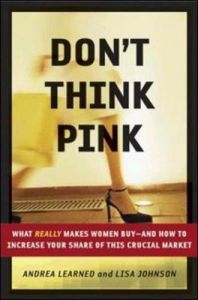Join getAbstract to access the summary!

Join getAbstract to access the summary!
Andrea Learned and Lisa Johnson
Don't Think Pink
What Really Makes Women Buy — And How to Increase Your Share of This Crucial Market
AMACOM, 2004
What's inside?
Marketers are polishing their pursuit of women shoppers' pocketbook power. Here's how to get your share of the purse.
Recommendation
Women are the most powerful consumer force in the U.S., but they do not approach buying decisions the way men do. That's intriguing, but it doesn't mean that exhaustive demographic and sales statistics make interesting reading. Authors and marketing consultants Lisa Johnson and Andrea Learned explain how to direct your marketing efforts to women. Each chapter deals with a different subset of women - old, young, black, white, Hispanic, married, single - but the groups are compared along similar lines and the information is sliced the same way in most chapters. The authors liven up their exposition with short illustrative case studies, but the cases often feature products for which marketers have made no concerted, specific effort to attract female buyers. For instance, the decision to sell single servings of food occurred because of other demographics (more people living alone) and was not intended just to attract women buyers. Still, the thesis here is important enough to carry the authors' occasional tendency to twist product features to fit the theme, as well as their branding jargon. Acknowledging the significance of marketing to women, getAbstract.com recommends this information-packed book.
Summary
About the Authors
Marketer Lisa Johnson has worked with clients in sporting goods, financial services and women's health. She developed a seminar on marketing to women for the American Management Association and is a speaker and conference presenter. She lives in Eugene, Oregon. Andrea Learned has written articles for MarketingProofs.com. Before founding the Reaching Women Web site, she spent 15 years in marketing and public relations. She lives in Burlington, Vermont.

















Comment on this summary